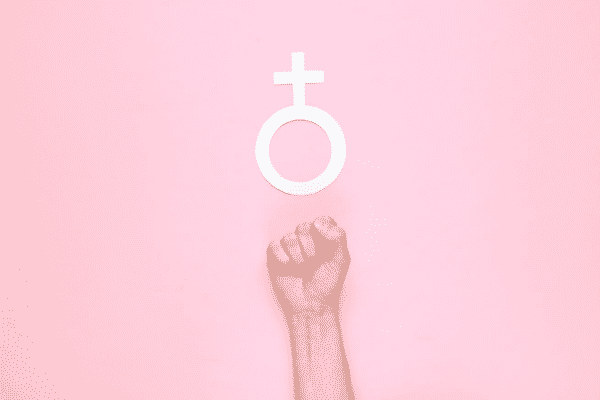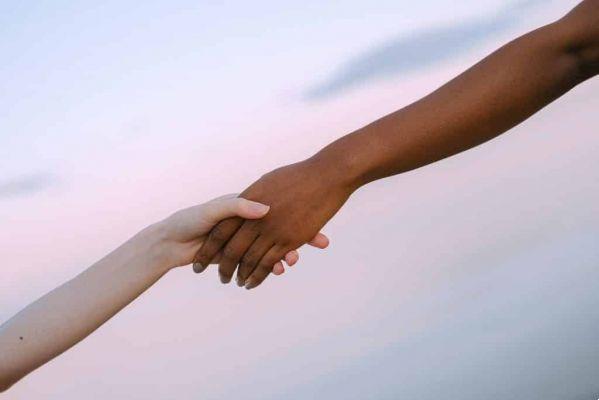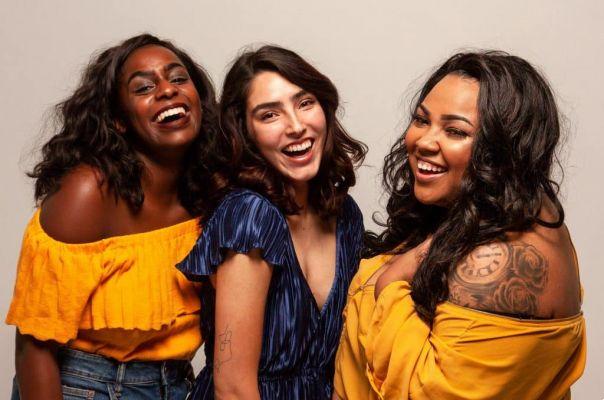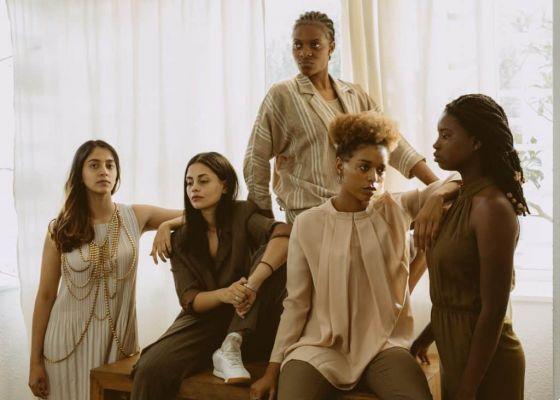Although in the XNUMXst century, world societies do not present themselves in an egalitarian way regarding gender rights, many were the female achievements caused by feminism, in the sense of women having a more respected place in society, different from what it was in the past. But there is much to be conquered. Get to know about feminism, to reflect and take a stand against or in favor!
What is feminism?
Feminism is a social, philosophical and political movement that aims at equal rights between genders and the rupture and liberation of women from the oppression of patriarchal patterns, through female empowerment.
history of feminism

The history of feminism has been developing in three major stages: the first took place in the 1960th and early 1970th centuries, the second in the 1990s and XNUMXs, and the third in the XNUMXs to the present day.
Feminism mainly changed the prevailing perspectives in several areas of Western society, especially in Culture and Law.
The first women activists, known as suffragettes*, fought for voting rights and eligibility, followed by contract rights and property rights.
Later, in the 1960s and 1970s, female activists fought for women's right to autonomy and the integrity of their bodies, in terms of abortion and in relation to reproductive rights, specifically related to access to contraception and prenatal care. quality Christmases.
Since the 1990s, the feminist struggle has focused on protecting women and girls against domestic violence, sexual harassment, rape, labor rights, including maternity leave and equal pay, and fighting all other forms of discrimination against women.
Throughout history, feminist leaders were middle-class white women from Western Europe and North America, but coinciding with the decline of European colonization in Africa, some countries in South America, the Caribbean and Southeast Asia, as well as with the social and civil movements of the United States of America, a new proposal emerged, with the leadership of women of other ethnicities and social classes.
Since the 1980s, feminists have warned that the movement should be alert to the fact that inequality between women and men is also echoed in issues surrounding racism, homophobia, classicism and the legacy of colonization. However, the so-called postmodern feminists argued that it is impossible to contemplate in the movement all the nuances of women's experience around the world, with their cultures and their diverse and complex histories.
* The suffragettes were the first feminist activists in the XNUMXth century who started the movement in the United Kingdom, in favor of granting women the right to vote.
Feminism proposals

Feminism propagates, among other many ideas and as a basis of struggle that:
– Women and men are people and deserve equal rights.
– In the performance of the same function, the salaries of women and men must be equal.
– Work opportunities should not be limited to women on the basis of the gender roles that society establishes, and they should not be discriminated against in the labor market because they are women.
– Women and men have the same responsibility for household chores and child care, and these are not tasks of a woman's pure and simple obligation.
– The roles that each gender plays are not natural and universal truths, because they are constructed by society and should not privilege one over the other, allow one to suffer more violence than the other, to have fewer rights, that is, considered inferior within the species.
– A woman is not the property or possession of any man, he has no right to verbally or physically attack her or establish what she can or cannot do.
– It is only up to the woman to decide how she will dispose of her body and her image, with whom and how she will relate, and how she will live her sexuality, because the body is her right.
– Any sexual act not consented by the woman must be considered as rape, as it is against her will.
– The woman is never to blame for rape or the act of violence, even if the victim's attitude is given as motivation and does not constitute an argument for the defendant's defense, as the woman is in a condition of discrimination.
– Women have the right to public space and public transport without being embarrassed, humiliated, threatened and intimidated by any man who practices harassment, because street or transport harassment is violence.
– Women should not be treated as a commodity, bargaining chip or prize, as they are not products.
– Women should not be subjected to male obedience, whether of the father, husband or partner.
“Women don't exist to beautify the world, much less for male approval.
– All women are real, even if they don't fit into some standard of beauty, so there is no concept of an ideal woman.
– Feeling good about your own appearance and loving your own body should not depend on skin color standards, weight or any other attribute linked to a pre-established standard of beauty.
– All the diversity of women must be considered for feminism, whether black, white, indigenous, transgender, thin, fat, heterosexual, lesbian, bisexual, with or without disabilities, and none should be “invisible” in the media, in history or in the culture.
– The media should not represent women in a stereotyped way, which dehumanizes to strengthen patriarchy and configures oppression.
– All people deserve respect for their individuality and identity, including sexual. Trans women are women and therefore belong to the human species.
– The opinion of women, their experiences, ideas and stories cannot be dismissed or considered minor because they are women. Women's voice matters.
– Voting and being voted on is a woman's right, as well as being politically represented and having the issues that permeate her condition and role included in laws and public policies, because the political space is also a woman's right.
– Anyone who decides to live together must have the union legally recognized by the state, whether two women or two men.
symbols of feminism
Symbols are graphic representations or images, elements of communication, that synthesize the ideas, concepts and meanings that something (eg feminism) wants to express and carries in its context.
In feminism we have the following symbols:

Mirror of Venus — this is the symbol for feminine (♀), a circle supported by the cross, extracted from Greek mythology that involves the goddess of love and beauty Aphrodite, and refers to the gender defended by feminism.
Mirror of Venus with a closed fist — this is the symbol of the feminine, in which, inside the circle, is the raised fist, known worldwide as the gesture of the black movement, used by the Black Panthers and symbol of Black Power. Within the mirror of Venus, he represents black women in feminism.
The raised fist represents solidarity, support, strength, challenge and resistance, and was widely used in various movements. It is an expression of the oppressed fighting the oppressors and was popularized in the 1960s during the 1968 Miss America feminist protests in Atlantic City, when the demonstration became known as the “Bras Burning”.
Woman with raised fist — this is the mirror of Venus and inside it is the figure of a woman with raised fist, which can symbolize the struggle of all women against patriarchy.
The origin and moment when this symbol appeared are unknown, but it is used in España as a figure of Anarquia Feminista, a branch of feminism that fights for the end of any and all authoritarian power, especially the patriarchal.
Transfeminism — this is the mirror of Venus with a clenched fist and the overlapping of the shield of Ares (♂), facing to the right and an arrow with a cross stroke, horizontally, positioned to the left and above the circle.
Ares' shield was taken from Greek mythology involving the god of war and lover of Aphrodite. It represents the masculine.
In the symbol of feminism, the mirror of Venus represents the feminine, the shield of Ares, the masculine, the arrow on the left and above with the cross stroke represents the union of the two - a third gender, for people who don't fit in the standard genres, and the raised fist that carries a message of struggle.
It represents the struggle of trans women in feminism and refers to transfeminism.
This symbol may contain a pink triangle in the background and was developed by writer and activist Holly Boswell, for whom human evolution was beyond binary genders.
Labris — this is an axe, with two symmetrical blades, emerged in Crete, in Ancient Greece, associated with female deities. In Greek mythology, it was used by Artemis, goddess of hunting and wild life, to which rituals involving lesbianism were dedicated.
It is also believed to have been an instrument of matriarchal societies such as the Greek Amazons, which, like the Spanish Icamiabas, were independent, held power, leadership and did not follow the patriarchal model.

Lábris has been used since the 1970s, both in feminism and in the lesbian movement, to symbolize women's strength, endurance and self-reliance.
Inverted black triangle — this is an isosceles triangle whose largest base is up, as if the triangle were upside down and was used in World War II, in Nazi concentration camps, to indicate lesbian, antisocial, prostitute women , feminists, strikers, alcoholics, among others.
Around the 1980s, feminism and the LGBTQ movement incorporated the symbol to represent resistance and as a way of honoring women who suffered under Nazism.
Rose, The Riveter or We can do it — this is a poster with a worker in blue overalls, a red scarf on her head and rolling up her sleeves. In the background, you can read the phrase “We can do it”, which means “We can do it”.
It is an old design created in the United States by artist J. Howard Miller in 1943 at the request of the Westinghouse Electric & Manufacturing Company during World War II to engage women in industrial work while men were in combat.
It was used as an advertising piece to encourage female labor, including for jobs considered male, but they were paid very low wages and when the men returned from the war, they were forced to leave their jobs.
It became part of feminism in the 1980s, in the so-called second “wave”, resignified to female strength, in the sense that women can do whatever they want.
The girl featured on the poster, known as “Rosie The Riveter” has become a pop culture icon, to the point of having National Rosie The Riveter Day in the United States starting in 2017.
The model who posed for the illustration in 1942 was Naomi Parker Fraley, a California waitress whose identity was obscured for more than 70 years. She passed away in January 2018, aged 96, and declared herself happy and honored to have the image related to female empowerment, in an interview with People Magazine in 2016.
Fight Like a Girl — is a phrase that prints on t-shirts, social media profiles, bottoms, etc. and re-signifies the old provocation that men used “you hit like a girl”, alluding to the sexist belief that women are weak, in a comparison with male strength and which gives the connotation of inferiority.
GRL PWR (Girl Power) — is a term used to represent female power, self-reliance and independence, which expresses a cultural phenomenon of the 1990s and early 2000s, popularized by the Spice Girls in the 1990s. to the third wave of feminism.
It's not — it's an increasingly popular phrase, for which there is a movement to combat harassment, used on stickers and tattoos during Carnival. The phrase alludes to the popular and sexist idea that “when a woman says no, she actually means yes”, a connotation that encourages sexual abuse. It is part of the fourth wave of feminism, nowadays, very contemporary.
Uters and vulvas — drawings and illustrations of uteruses and vulvas are also used as symbols of feminism to break paradigms about the female gender, in terms of female genitalia, menstruation, sexuality, to break the concept that they are dirty, fragile, or any other pejorative connotation about a woman's body. They are figures linked to the fourth wave of feminism, therefore, relevant to our days.
Relationship between feminism and machismo

Some people imagine that feminism is the opposite of machismo. However, feminism is a movement that aims to build conditions of equality between genders. Machismo, on the other hand, is a set of behaviors that imposes on women a position of inferiority to men.
Both men and women can adopt sexist behaviors, as they are learned through experience in society, are part of patriarchy and are perpetuated throughout history, starting with family relationships.
Women and men can adopt a feminist stance when they understand the importance of equal rights and a more just society in which social roles complement each other, not related to gender, but to the organicity of society.
The opposite of machismo is femism, which tries to establish a relationship of submission between men and women, so that they obey, submit and submit to their desires and wishes, distorting the idea of equality between genders and being as harmful as machismo. to the concept of what it is to be human.
Feminism on the Rise

For some time now, feminism has been gaining strength thanks to technology that has facilitated and streamlined communication between people and, as a result, women have been able to exchange ideas and information about what they experience in everyday life, such as harassment, discrimination, devaluation in the job market. , prejudices, etc., on a global level.
Another factor is the growth of movements that end up inspiring and linking to feminist struggles, for example, the LGBTQ+ and anti-racism movements.
Why take a stand in relation to feminism?

Gender inequality has been perpetuated over the ages, in a vicious circle that is difficult to break, either because of the misinformation of many, or because of the patriarchal structures of world societies.
Many women believe that men cannot support feminism because they do not have the experience to support the understanding of what the need for gender equality actually represents, since they do not suffer from discrimination, prejudice and injustice suffered by women. However, this understanding is also wrong, as feminism deals with equal rights in order for men and women to be human persons.
The awareness in favor of feminism does not bear fruit if there is not a position that generates actions that contribute to breaking this vicious circle of inequality of rights between genders and, even more, that begin to reflect the changes in the ideology of societies.
Therefore, positioning oneself in relation to feminism means understanding the movement's proposal, its social and humanitarian importance, and breaking, through individual and collective actions, with the standards established to generate an aggregating relationship between genders that concerns the humanity.
female empowerment

Female empowerment is the collective awareness of the empowerment of women in achieving gender equity, so that they are free to be who they are, independent of the socially imposed standards on how they should be, act, look, love, and to have the same possibilities that men enjoy in society.
In feminism, female empowerment is fundamental. It supports actions against prejudice, discrimination and injustices fought by the movement, goes beyond this context and reaches society, and assumes the characteristics of ideological strengthening so that everything that has been fought is not perpetuated. He has the ability to break patriarchal patterns.
Any minority group in society, in a condition of oppression, can be strengthened to become aware of their power, thus achieving their empowerment.
Empowerment can be individual and occur with individuals in a condition of vulnerability or fragility, whose power or dominion over them is latent and dormant.
Women's empowerment and gender equity in all social and economic activities ensure economic strengthening, boost business, improve the quality of life for society as a whole and for sustainable development.
Women represent a major influence in the economic sector and have long accessed work in companies, industries and organizations, which directly influence the economy.
Based on the fact that companies play an important role in the growth of economies and for human development worldwide, UN Women and the Global Compact created the Women's Empowerment Principles, which is the set of considerations that support the business community to incorporate in its businesses, values and practices that contribute to female empowerment and gender equity. See what these principles are:

1. Establish gender-responsive corporate leadership at the highest level.
2. Treat all women and men fairly at work, respecting and supporting human rights and non-discrimination.
3. Ensuring the health, safety and well-being of all women and men working in the company.
4. Promote education, training and professional development for women.
5. Support women's entrepreneurship and promote women's empowerment policies through supply chains and marketing.
6. Promote gender equality through community-oriented initiatives and social activism.
7. Measure, document and publish the company's progress in promoting gender equality.
- Reflect on the importance of International Women's Day
- Fight like a woman. Create independent girls
- What is feminism?
- feminist initiatives
- The history of the feminist movement
- Learn all about female empowerment
Female empowerment can also be observed in everyday life, when a woman adopts a position of repudiation of harassment, without blaming the victim, or when she simply encourages the other to seek to accomplish what she wants regardless of ethnicity, social class, age. or similar. It is present when a woman strengthens the other to accept herself with all the particular beauty of her body, to challenge herself in a leadership position within the company and when she tells her son that — be it his mother, his sister, family member or friend — each and every woman deserves respect not because of her gender, but because she is a human being, just like herself.
Now that you already know a little about feminism, be inspired to seek more information, if you deem it necessary, and reflect on what position you can adopt, considering that you are part of society, receive influences from it in your life and that with your way of being, thinking and acting also contributes to making it more or less fair. Good reflection!

























